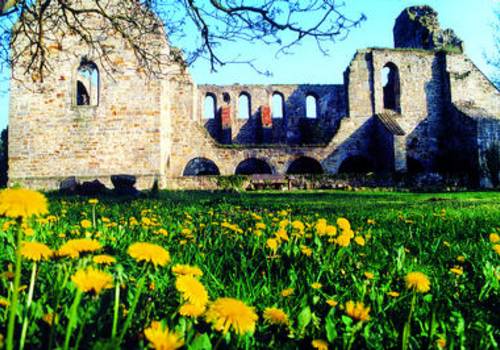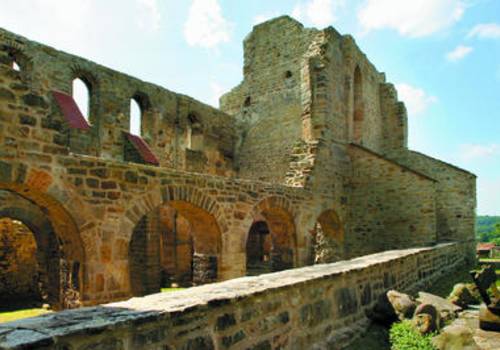Ruins of the collegiate church of St. Mary, Walbeck
Walbeck castle above the Aller was already the home of a family of the high nobility in the 10th century; the following century, they were to become margraves of the Nordmark.
It was first documented in 929. The most famous scion of the counts of Walbeck is Thietmar, Bishop of Merseburg (1009-1018) and the author of the most important chronicle of the High Middle Ages. His grandfather Count Lothar II of Walbeck was involved in a conspiracy against Emperor Otto I in 941. As penance, he had to establish a monastery in his principal castle. He built a large collegiate church which was consecrated in honour of Mary, St. Pancras and Anne. In 964, Lothar II was buried in the collegiate church. The church and monastery survived the Reformation; the castle of the counts of Walbeck only until the 13th century.
A high mediaeval funerary monument was found in the graveyard of the collegiate church in 1932, and removed to Walbeck village church in 1933. This church was built in 1888-1892 in imitation Romanesque style. The monument probably belonged to Lothar II, and is one of the earliest surviving funerary monuments in central Germany.
Ruins freely accessible, church by arrangement

![25 Jahre Siegel - Offi Seite [(c)Administrator]](https://www.strassederromanik.de/de/datei/anzeigen/id/79750,1050/25_jahre_siegel.png)

